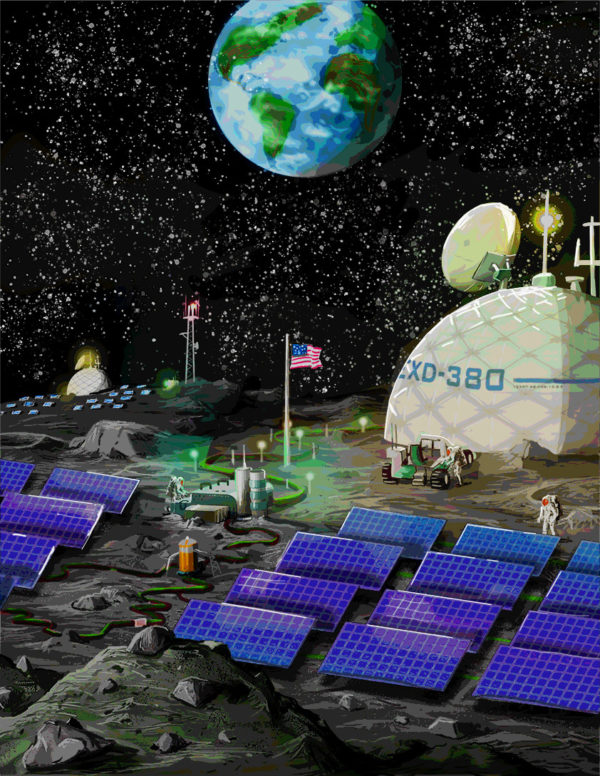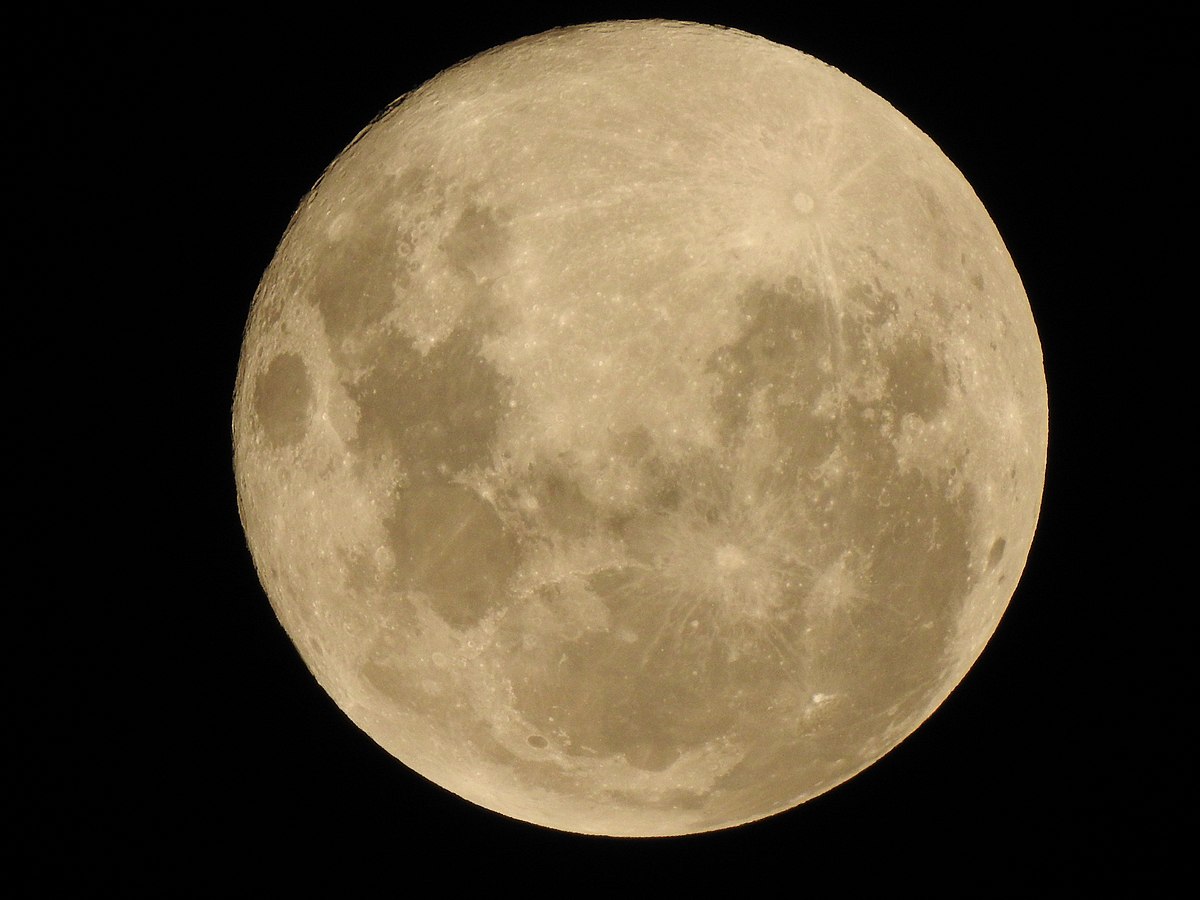Researchers with Sandia National Laboratories, known for their work in designing resilient microgrids for extreme and remote applications, have teamed up with partners at NASA and the University of Puerto Rico-Mayagüez to design a microgrid that can power operations at NASA’s planned Artemis lunar base.
In truth, the team is actually developing two microgrids, one which will power the essential, life-supporting services and research facilities at the Artemis Base Camp, and another that will power mining and processing facilities, set to be located roughly five to 10 miles from the base camp. These mining and processing facilities, assuming all goes to plan, could produce rocket fuel, water, oxygen and other materials needed for extended exploration of the lunar surface while decreasing supply needs from Earth.

The two microgrids will be connected to provide resiliency in the event of any level of failure at either location. One of the core elements of the project will be designing an electrical system controller for the mining and processing center’s microgrid (NASA is in charge of the controller for the base camp), one that allows for maximum energy to be available during mining and research expeditions, but also reliable enough to keep operations at the base camp running safe and smooth, in case there are any issues with the camp’s own power supply.
“It’s a lot of those control questions, its resiliency, its supplying the load effectively,” explained Lee Raskin, an electrical engineer with Sandia. “In this case, it has been flipped a little. We’re not looking so much at how we dispatch the generation so much as we are how can we dispatch a load? How do we determine ‘Well, those loads are actually critical, which loads are less critical? Okay, that’s just an experiment, if they have to not do that experiment for a day, okay. Whereas this load, oh, that’s life support that absolutely positively has to stay.’ We’re figuring out how to control that. It’s analogous, where instead of saying, ‘Oh, hey, what did we do to the sources and the energy storage that were supplying all the load?’ It’s more like ‘What do we have to do on the load side, so that we’re not trying to ask for more than the source can generate?'”
At this point in project research and development (R&D), Raskin and his team are trying to develop control systems to communicate across the line that will ‘tie’ the two microgrids together in a way that will enable them to shift power from one to the other based on which loads are actually critical. Every single thing on the base or at the mining station will be tiered by how critical they are to survival and base operations, using criteria delivered by NASA, and the control system is being developed to ensure that the most critical loads stay on-line, even in the face of unexpected interruptions, like a small meteorite hitting a PV module.
Before any control system design can be done, however, the researchers need to have a clear understanding of how their hardware will operate in space and what differences in operation will arise for a solar system being installed. But how does a researcher on earth model for system performance in space?
“Here in our Albuquerque site, we have what is known as the Distributed Energy Technology Laboratory,” explained Rachid Darbali-Zamora, another electrical engineer with Sandia working on the project and a graduate of the University of Puerto Rico-Mayagüez. “One of the platforms that we have is known as power hardware-in-the-loop. It enables us to connect a hardware physical device into a simulation environment through the use of power amplifiers and current transducers. The idea is that you have an actual physical power converter and a simulation of the lunar habitat, you can create an event in the simulation, and the power converter will respond to it. The response of the power converter is sent to the simulation, closing the loop.”
Darbali-Zamora continued to explain that the system gives Sandia the ability to create an environmental simulation model that represents the lunar habitat and run different case scenarios to see how some of the hardware responds to it.
And while all of this testing and modeling is being done to determine hardware and control system efficacy in lunar applications, the Moon isn’t the only remote, isolated location with a need for a resilient microgrid power supply. Both Raskin and Darbali-Zamora anticipate that their R&D efforts will provide the basis for new control schemes or power architectures for terrestrial applications.
Bringing innovation home
“There’s a lot of things that we’re researching that have implications here on Earth; for remote communities that are affected by, let’s say a loss of a solar panels, but maybe instead of a meteorite, they’re damaged by a hurricane,” explained Darbali-Zamora.” Maybe this could have implications in Puerto Rico, or maybe for studying a system that is isolated, and it’s not connected to the bulk grid. Sure, it could be a lunar habitat, but it also could be a community in Alaska. When we look at critical loads, heating is important on the Moon. In Alaska, that’s also a critical load that we have to maintain.”
The Artemis lunar base microgrid project also marks the first time that Sandia National Labs, NASA, and the University of Puerto Rico-Mayagüez have collaborated on a project, something the team, particularly Raskin and Darbali-Zamora, are excited about. Since the devastation of Hurricane Maria, which destroyed virtually all of the island’s transmission infrastructure, Puerto Rico has become a sort of proving ground for the development of resilient microgrids, as the island frequently falls in the path of powerful, destructive hurricanes.
A combination of microgrids and renewable energy was mandated in summer 2020 during the development of a utility integrated resource plan (IRP) for the island. The mandate came from the Puerto Rico Energy Bureau, the island’s chief energy regulator. Puerto Rico’s utility, PREPA, had been developing its IRP since March 2018. The energy bureau ruled that microgrids must be a central part of grid planning.
While the Sandia team’s project sounds just like something out of an Asimov story, the breakthroughs that they discover may be just as impactful for existing communities on Earth as they will be for future communities among the stars.
This content is protected by copyright and may not be reused. If you want to cooperate with us and would like to reuse some of our content, please contact: editors@pv-magazine.com.









The sun rises daily on Earth but only every 14 days on the moon. Since the Moon faces the same side toward Earth, Earth shine light could provide some light but not enough to power most solar panel systems when the base is not being illuminated by sunlight. A planed base at the moons south pole could have tracking solar panels on a mountain top that could follow the sun in a circle as they extract water from lunar soil ice but the best source of power on other parts of the moon would be nuclear power like used on US Nuclear submarines that are compact and do not need re-fueling for 7 years.